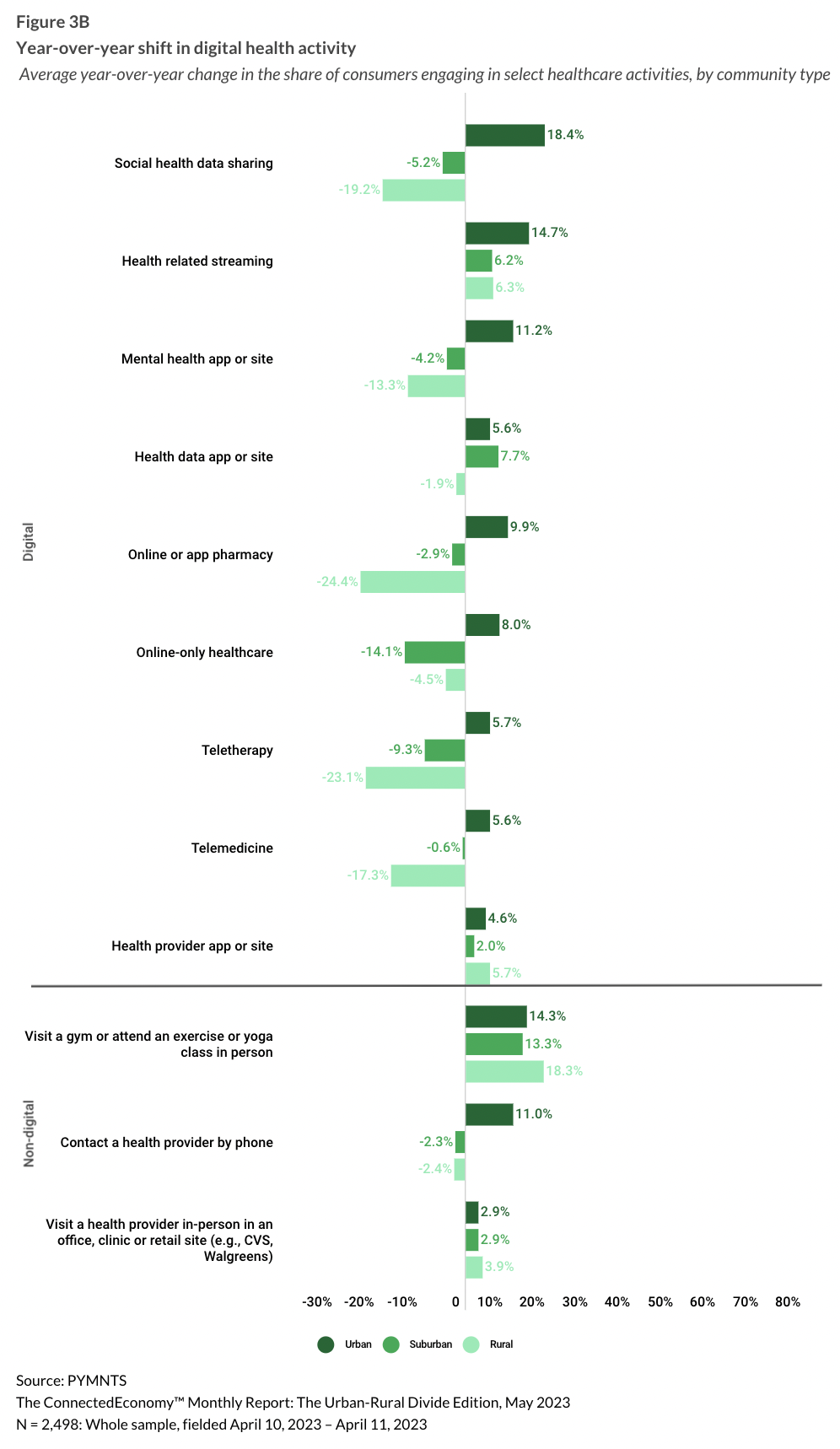
When it comes to digital healthcare, consumers living in urban areas continue to increase their engagement, but those in rural areas are beginning to pull back and return to more traditional methods.
The PYMNTS Intelligence study “ConnectedEconomy™ Monthly Report: The Urban-Rural Health Divide Edition” draws from a survey of nearly 2,500 United States consumers to shed light on the widening gap in digital healthcare participation between urban and rural communities. The survey reveals stark disparities in the utilization of digital healthcare tools, particularly in the areas of mental health and pharmacy services.

The report reveals a trend of decreasing digital healthcare participation among rural consumers, even as urban consumers’ digital connectivity increased. Out of the nine digital healthcare activities tracked, rural consumers reported decreased engagement in seven categories year over year, while their urban counterparts increased engagement across all nine.
The only two activities that experienced marginal increases over the previous year were streaming healthcare-related videos and using healthcare providers’ apps and websites. However, these increases were fairly small, with just 6.3% more rural consumers reporting streaming healthcare videos and 5.7% more utilizing providers’ apps and websites compared to the previous year.
Notably, rural consumers’ growth in the latter outpaced urban — the one category where this is true — with only 4.6% more city dwellers using health providers’ apps and websites more during the same period.
Most starkly, the share of rural consumers using online or mobile app pharmacies decreased by 24.4%, and the share engaging with teletherapy fell by 23.1%. For urban consumers, meanwhile, the most dramatic increases were in social health data sharing and health-related streaming, at 18.4% and 14.7% year over year, respectively.
The data underscore the significant discrepancy in access to digital healthcare tools between urban and rural communities. The digital healthcare divide between urban and rural communities is becoming increasingly apparent, as urban consumers outpace their rural counterparts in utilizing these resources.